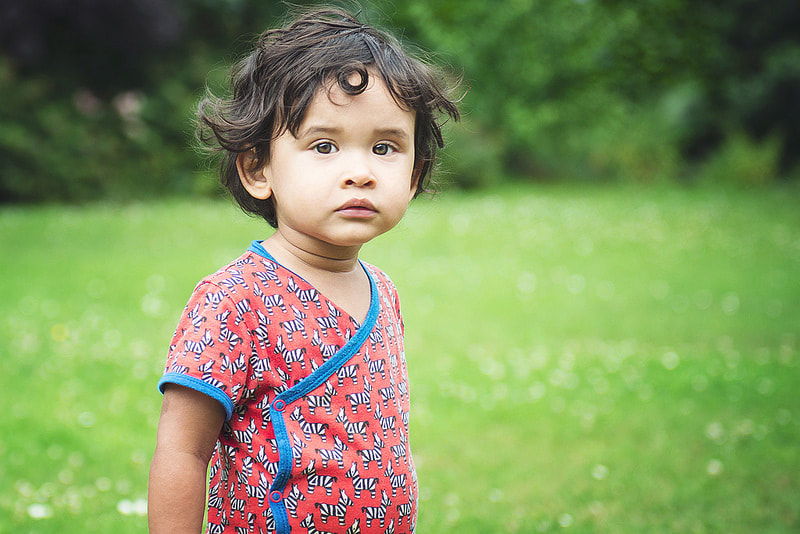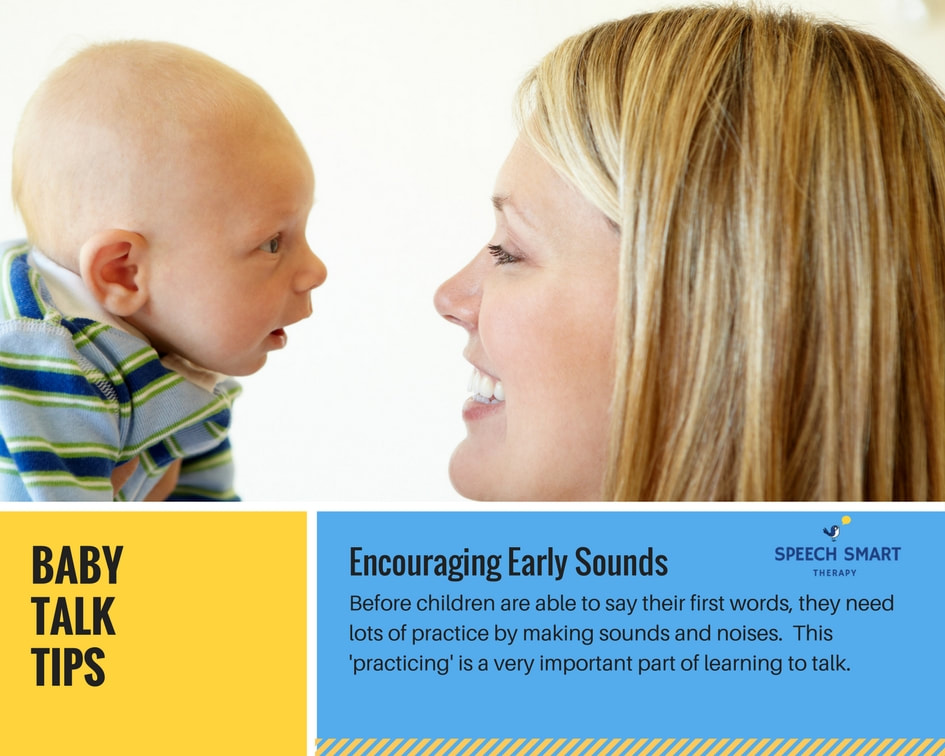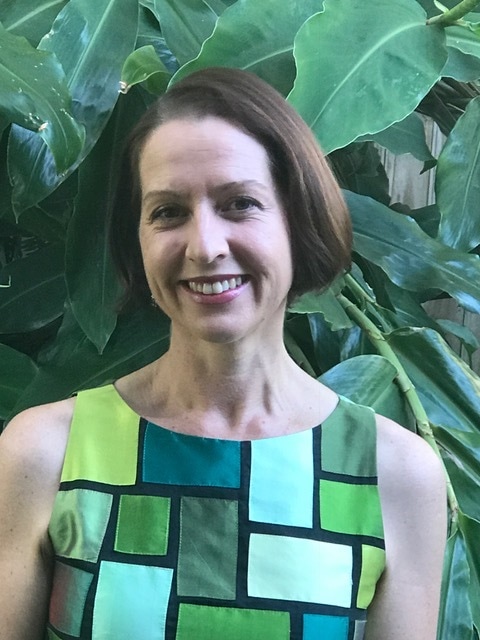|
STRATEGIES TO ENCOURAGE SPEECH DEVELOPMENT
Your speech pathologist can provide you with specific details on how to help your child produce particular sounds. However, these are some general strategies to use to help a child who has unclear speech. It will give you some general ideas before seeing a Speech Therapist. Get face to face Get down to your child’s level, so your child can see your mouth. Make sure your child is looking at your face when you model a word. It is difficult to copy words or sounds just by listening. It helps if your child can see how you move your lips, tongue and jaw to make the sound. Slow down Speak in a slow but natural way so your child is encouraged to speak at the same rate. Slowing down your speech when you are talking to your child will allow your child to hear and see all of the sounds involved in producing a word. This is especially important when words have more than one syllable and where there are lots of sounds to listen to. It also encourages your child to speak at a slower rate. Speaking quickly requires more refined coordination. Emphasise a sound Slightly exaggerate the sound you wish your child to say correctly, while still saying the word naturally. It will make the sound stand out a little more so they can clearly hear it. Instead of asking your child to repeat the word, model the word back emphasizing the sound in error correctly (e.g. Your child says, “I want the big tar”, you can say, “You want the big Car?”. Break up longer words into syllables and/or smaller words This can help your child say longer words that are tricky for them. This strategy is best used for words they have heard before and understand the meaning of. It may be easier for your child to break the word into parts and to slowly put the parts back together. Get them to watch you say it a few times before asking them to try to copy you. For example, if your child can say ‘flower’ but struggles to say the longer word ‘cauliflower’, try breaking it up into: Caul … Caul-i …. Caul-i-flower (and then show them how to put it back together slowly) …Cauliflower. For example: The word ‘kangaroo’ can be broken up into: Kang … Kang-a … Kang-a-roo … (and then put back together slowly) … Kangaroo Self monitoring and offering choices Only use this strategy if your child can say the sound correctly in some words, recognise when they have said a word the wrong way and are able to fix it up easily. If they aren’t able to say the sound, offering choices would not be helpful. This skill often develops around the age of 4 years. For example, if your child has trouble saying the ‘k’ sound at the start of some words but can sometimes say it correctly you might ask them, did you mean ‘tea’ or ‘key’ if they’ve said, “here are your teas” for ‘here are your keys’. As they get really good at fixing up their words, try to encourage your child to notice when they have said the wrong sound. Gently remind them when they forget to use the right sound and ask them to fix it up. Keep this a positive and fun experience for your child. Praise all attempts by your child, even if it was not correct. For example: “Great try or I can see you are trying very hard.” Listening games Read books to your child that are loaded with the sound they are having trouble saying. For example, if they’re having trouble with the ‘sh’ sound read them ‘The Green Sheep’ book every night for a week to tune their ear into hearing how that sound is used in words. Sometimes pause before you say the word ‘sheep’ while you are reading, wait for them to look up at your face to see why you have paused, continue reading once they’ve looked up at your face. This will ensure they are seeing and hearing how to say the target sound in words that you want them to focus on. While talking with your child, make an error in your own speech to see if your child notices. For example: if your child has trouble with the sound ‘k’, you could say ‘tup please’ for ‘cup please’ If your child notices the error, give them praise. If you child does not notice the error, point it out yourself. You could say ‘Whoops. I said ‘tup’ instead of cup!’ Model If your child says the wrong sound in a word (“tite” instead of kite), get them to look at you and say the word to them correctly. For example, you could say ‘Yes that is a kite. It’s a blue kite.’ Say the word with the correct sound and try to use the word many times in the conversation or during a play activity so they can see how to say it the right way. You don’t need to ask the child to repeat it or add further explanation – they are learning how to say it just by watching and hearing you say it. Sometimes a child needs to hear and see how to say a word many times (e.g. 30+ times) before they feel confident to give it a go themselves. Praise self-corrections Give specific praise to children when you notice self corrections (fix ups without your prompting). For example: you could say “You fixed that one up, super talking! First you said ‘dun’ and then you fixed it up all by yourself and said ‘sun”. Important advice: Be aware of the child’s errors and what is expected for his or her age. Expect your child to make some mistakes, as learning to say all speech sounds correctly takes time. In young children learning to speak, speech errors are quite common. By 3 years of age you should be able to understand your child at least 75% of the time. Promote good hearing. Good hearing is essential for the development of normal articulation. If you have concerns with your child’s speech skills, it is always a good idea to have his/her hearing assessed. If you are concerned about your child’s speech production please contact Speech Smart Therapy for an assessment, we are here to help! Sarah Creagh Private Speech Pathologist Speech Smart Therapy
Your baby may only make a few sounds to start with, but as he/she gets older he/she is able to make more and more sounds. From as young as 3 months babies start to take turns in vocalising (making voice sounds) and make two or more speech sounds. From six months an average child can make four or more distinct sounds including vowels and consonants (e.g. p, m, d). Initially they are likely to repeat sounds when babbling (e.g. bababa, dada) followed by varying their babble and playing with sounds more (e.g. badaga, gagada). Below are tips for helping develop your babies skills in 'practicing' making sounds and learning to talk. Imitate Sounds Your Baby MakesPlayfully imitate the sounds your baby has just produced or say the word they may be trying to use (do this immediately after your baby has said the sound). Encourage Your Child to Make More SoundsPlay games and activities that encourage lots of sounds. Listen to your baby and take note of what activities he/she likes to make sounds to and what time of day he/she is most talkative. For example, bath time, meal time or just after he/she wakes up may be great times for making sounds. Exciting toys (e.g. pop up or spinning toys) or social games (e.g. peek-a-boo) can be great for encouraging your child to make sounds. Sitting in front of a large mirror and making silly faces and noises together is another activity that encourages many babies to make sounds. Take Turns Making SoundsYour baby will learn to take turns in making sounds when you copy a sound that your baby has already made. Reward your baby if he/she imitates the sound back (e.g. smiling, cuddling, clapping). Repeat the sound again to help encourage your baby to take turns to produce a sound. Pause and wait for them to take another turn. If they do, again reward them with a smile or cuddle. Introduce New SoundsOnce your baby is able to take simple turns making sounds they know, you can start to encourage your baby to copy new sounds. It may be easiest to start with simple turn taking using a sound they know and then introduce a new sound (e.g. 'baba' (sound your child can can say) and then 'dada' (a sound your child doesn't know). Keep new sounds simple (e.g. p, t, d, n, m, h, g, k, ar, oo, ee). Imitating 'Play' SoundsOnce your child is starting to make a variety of sounds and sound sequences, start to use lots of sounds during 'play'. 'Play' sounds are often easier to imitate than real words e.g. 'Mmmm' when eating something yummy, 'woof' 'woof' when looking at a dog together, 'wee' when going on a swing or down a slide, 'oh oh' when something drops, ' Grrr' when pretending to be a lion, 'brmm, brmm' when pushing a toy car, 'pop' when popping bubbles. Use 'play' sounds lots when doing something that your child really likes. For example, everybody knew my little niece loved dogs because she'd get so excited every time she saw one. Her mum would say "woof woof", whenever she pointed at a dog excitedly. Not surprisingly this was one of her very first words! Written By:
Sarah Creagh Speech Pathologist Speech Smart Therapy |
Author - Sarah CreaghI'm a speech pathologist with a passion for working in partnership with parents to support children to reach their maximum potential. Archives
September 2018
Categories
All
|
||||||





 RSS Feed
RSS Feed

